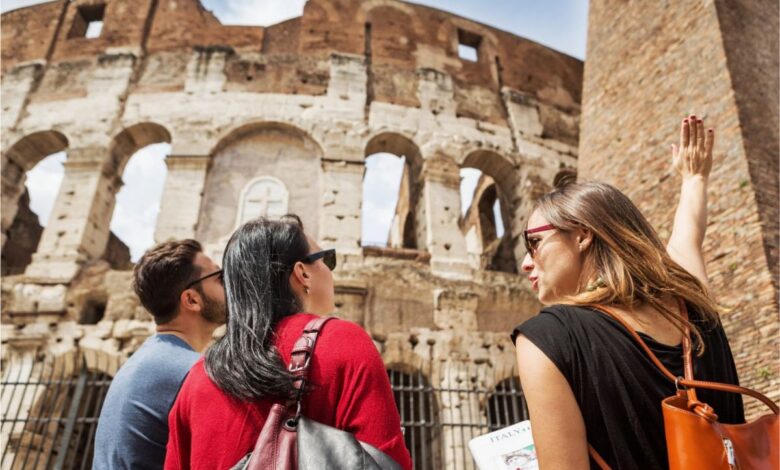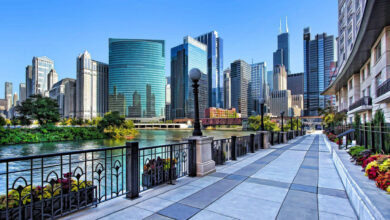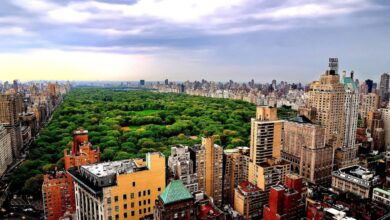5 Interesting Facts About New York City

New York City, a bustling metropolis often hailed as the cultural, financial, and artistic capital of the world, is a place that needs no introduction. Here are five interesting facts that delve into the unique blend of features that make New York City a fascinating study in contrasts.
Cultural Melting Pot
Wander through the streets of New York City, and it becomes evident why it’s considered a global cultural melting pot. The city is a cultural tapestry woven from the threads of over 800 languages, making it one of the most linguistically diverse places on the planet. This diversity shines through in the city’s mosaic of neighbourhoods, each with its distinct flavour.
Diversity in Neighbourhoods
Neighbourhoods such as Chinatown, Little Italy, and Harlem are not just geographical locations but are emblematic of the cultural identities they represent. Chinatown buzzes with Chinese festivities, markets, and culinary delights. Little Italy holds onto its Italian roots with traditional eateries and an annual feast that draws crowds from all over. Harlem, known for its African American heritage, is steeped in history and is the cradle of impressive arts and jazz scenes.
Impact on Cuisine and Dining Experiences
This melting pot of cultures has given rise to a gastronomic paradise. From authentic bagels and pizza to Michelin-starred international restaurants, the city’s food scene is as varied as its population. Food becomes a bridge between cultures, with fusion cuisines inventively blending elements from different traditions to create something uniquely New York.
Influence on Arts and Entertainment
The impact of diversity is also felt in the arts and entertainment. Broadway showcases both classic and contemporary performances that draw from various cultural influences. Museums and galleries across the city display an array of art forms from around the world, underlining the city’s commitment to cultural inclusivity.
Skyscraper Capital of the World
New York City’s majestic skyline is emblematic of its lofty aspirations. It is the Skyscraper Capital of the World with over 6,000 high-rise structures piercing the heavens.
Architectural Landmarks and Their Significance
Landmarks such as the Empire State Building and Chrysler Building are not just architectural marvels but time capsules of an era. These structures narrate stories of innovation, ambition, and the unyielding American spirit. The newer One World Trade Center, standing where tragedy once struck, symbolises resilience and rebirth.
Evolution of Skyscraper Design and Construction Techniques
Over the years, skyscraper designs have evolved from the early steel frames to modern green buildings, showcasing advancements in engineering and a growing focus on sustainability. These towering giants reflect the city’s ability to adapt and grow.
Economic and Social Impact of Skyscrapers
Skyscrapers are more than an impressive outline on the horizon; they are powerhouses of economic activity, homes to corporate offices, and social beehives offering panoramic vistas of the city’s expanse.
Financial Powerhouse
New York City is a titan of commerce, hosting the lifeblood of the world’s economy in its veins.
History and Significance of Wall Street
Wall Street, home to the New York Stock Exchange, is an iconic symbol of wealth and economic power. Its history stretches back to the city’s colonial days and has grown into a global barometer for financial health.
Role in Global Finance and Commerce
The concentration of major banks, investment firms, and hedge funds has made New York City a central actor on the world’s financial stage. The decisions made within its towering edifices can send ripples across the globe, influencing markets and defining trends.
Impact of Financial Industry
The financial industry not only dominates the economy but also imprints its mark on New York’s bustling culture, dictating a pace and lifestyle that mesh seamlessly with the city’s vivacious character.
City That Never Sleeps
New York City is an insomniac, its streets as awake at 3 AM as they are at 3 PM.
Nightlife Hotspots and Entertainment Options
The city’s nightlife is legendary, with venues catering to every preference, whether that be a low-key jazz bar or a high-energy nightclub. Theatregoers stream out of Broadway shows while others dine at late-night eateries.
Impact on Tourism and Hospitality Industry
This city of night offers a mammoth tourism and hospitality industry adept at satisfying the desires of each visitor, contributing significantly to New York’s economic dynamism.
Sociocultural Implications
The city’s round-the-clock lifestyle shapes its unique character, offering residents a sense of freedom and endless possibility.
Green Spaces Amid Urban Jungle
Contrary to its ‘concrete jungle’ moniker, New York City cherishes its green sanctuaries.
Iconic Parks and Their Historical Significance
Central Park is the most famous of these, an 843-acre wonderland located in Manhattan, offering residents and tourists alike a place to retreat from urban stress.
Importance of Green Spaces for Urban Well-being
These parks are crucial for the well-being of New Yorkers, serving as communal spaces for relaxation, exercise, and socializing.
Sustainability Efforts and Initiatives
New York City consistently strives to expand its green footprint, enhancing urban living with sustainability initiatives that aim to preserve these vital lungs of the city.
New York City, in all its glory, is more than just a geographic locale. It is a living, breathing entity – a cornucopia of human experiences, a testament to human achievement, and a continuous story of growth, resilience, and boundless energy.




